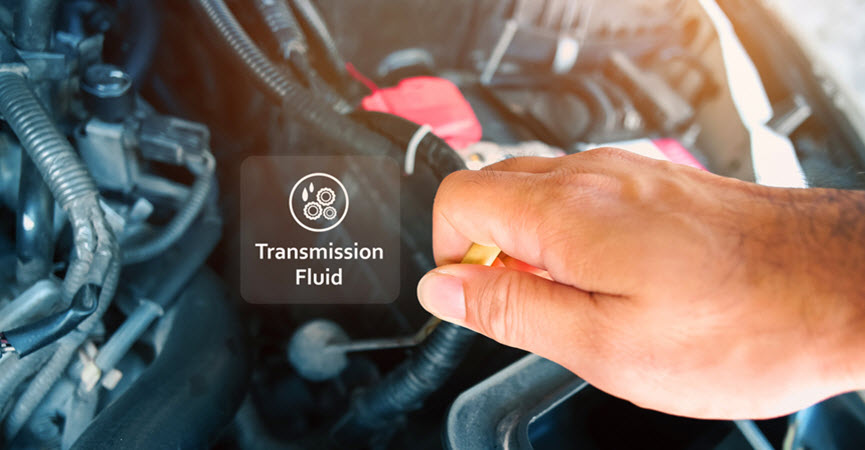
by Chris Limantour | Feb 23, 2023 | Audi Repair
One of the most important components in your Audi that needs attention is the valve seal. If this valve or its seal is cracked or damaged, it will leak oil and negatively affect the performance of your Audi. The seal is a synthetic material that locks the entrance to the valve, thereby allowing or stopping oil from passing through. An engine’s valves and gaskets play a crucial role in ensuring its smooth running, and their importance cannot be overemphasized.
What are the signs of a Valve Seal Oil Leak?
A valve or gasket that leaks oil may have some of the following signs:
- Smell of burning oil: When the valve or gasket of an engine leaks oil, the oil will usually drip down the vehicle engine or spread across other surfaces, and when it finds its way to one of the metal components that are hot such as the exhaust pipe, cylinder head, or other metallic materials that are usually hot, these metals burn the oil and cause it to produce the smell of a burned oil. If you perceive burning oil in your vehicle, do well to contact a professional to ascertain the cause of the oil leak.
- Dirt appearing on the valve cover or visible oil: The accumulation of oil in the valve gasket makes it very easy to detect a leak. When a technician pours oil into the car, some may collect at the cylinder head, which is usually cleaned. If after the car has worked for some time and you still observe this, it means oil still finds its way out from somewhere. Your technician will inspect the valve and detect the exact source of the leak. It’s most likely a result of a bad valve.
- Engine oil gets low: Another way to detect valve seal oil leaks is the dashboard oil light coming on. As oil leaks from the vehicle frequently, it causes the amount of oil to drop drastically, which will cause the oil light on the dashboard to come on. If you observe a continuous drop in the oil level, this is an indication that the valve seal is bad or that oil has found its way out of your engine through a leak. Alert our professionals to inspect your Audi so that the necessary steps can be taken to solve the problem.
- Misfire or irregular running of engine: When the engine of your Audi does fire smoothly in sync with all of its components, oil may have leaked into a part and is ruining the combustion process. Oil may have found its way into a spark plug tube, affecting the performance of the spark plug itself, for example. This can cause an engine misfire and all sorts of problems for your engine.
How Our Mechanics Will Resolve your Valve Seal Oil Leak
Repairing a valve seal oil leak in an Audi can be a complex process that requires specialized knowledge and tools. Here are the steps our mechanics might take to repair a valve seal oil leak in an Audi:
- Diagnosis: The first step is to identify the source of the oil leak. This might involve using a dye or other diagnostic tools to pinpoint the location of the leak.
- Disassembly: To access the valve seals, we will need to remove the valve cover and other components that are in the way. This might include removing the intake manifold or other parts.
- Valve seal replacement: Once the valve seals are accessible, we will remove the old seals and replace them with new ones. The new seals must be properly seated to prevent further leaks.
- Reassembly: After the new seals are installed, our mechanic will reassemble the engine components in the reverse order of disassembly.
- Testing: Once the repair is complete, we will test the engine to ensure that the valve seals are no longer leaking oil. This might involve running the engine and checking for leaks or using diagnostic tools to confirm that the issue has been resolved.

Schedule An Appointment With JCL Automotive Experts
Repairing a valve seal oil leak in an Audi can vary depending on the model and year of the vehicle, as well as other factors such as the severity of the leak and the condition of the engine. It’s always best to consult with a qualified mechanic or technician for guidance on the best course of action for your specific situation.
At JCL Automotive, we specialize in the maintenance and care of Audi and other vehicles. We are conveniently located in Hellertown, PA. Call us today for that unique car service that will give a long-lasting performance to your Audi car. We are always here to serve you!

by Chris Limantour | Feb 6, 2023 | Mercedes Repair
Mercedes vehicles are known for their exceptional quality and advanced technology. One of the critical components that ensure proper functioning of Mercedes vehicles is the 13-pin connector. In this article, we will discuss what the 13-pin connector does, symptoms of failure, causes of failure, and when it should be replaced.
What is the 13-pin connector?
The 13-pin connector is a vital component in Mercedes vehicles that connects the transmission control module (TCM) to the engine control module (ECM). It facilitates the exchange of data between the two modules, ensuring that the transmission operates smoothly and efficiently.
Symptoms Of 13-Pin Connector Failure
The following are some of the most common symptoms of a failing 13-pin connector in a Mercedes:
- Transmission slipping: A faulty 13-pin connector can cause the transmission to slip or shift improperly, resulting in jerking or jolting movements while driving.
- Delayed or Harsh Shifting: If the transmission is taking longer than usual to shift, or shifting is more abrupt than usual, this may be an indication of a failing 13-pin connector.
- Failure to shift: If the transmission fails to shift at all, it could be a sign of a complete failure of the 13-pin connector.
- Warning lights on the dashboard: If the check engine light or transmission warning light illuminates on the dashboard, it may be a sign of a problem with the 13-pin connector.
Causes Of 13-Pin Connector Failure
Several factors can cause a 13-pin connector to fail, including:
- Age: Over time, the 13-pin connector may wear out due to exposure to heat, moisture, and other environmental factors.
- Contamination: Contaminants, such as dirt or water, can enter the connector and cause damage to the pins or the internal components.
- Electrical Problems: Voltage spikes or other electrical problems can cause damage to the 13-pin connector.
- Poor Maintenance: Inadequate maintenance, such as infrequent transmission fluid changes, can cause damage to the 13-pin connector.
13-Pin Connector Maintenance
Proper maintenance of the 13-pin connector in a Mercedes is essential to ensure its optimal performance and prevent premature failure. Here are some recommended maintenance practices for the 13-pin connector:
- Regular Inspection: It is recommended to inspect the 13-pin connector during routine maintenance services, such as oil changes. A mechanic should inspect the connector for any signs of damage, such as corrosion, bent pins, or loose connections.
- Keep the Connector Clean: The 13-pin connector is vulnerable to dirt, moisture, and other contaminants that can cause damage. To prevent contamination, keep the connector clean and dry. Use a soft-bristled brush and compressed air to remove any dirt or debris from the connector.
- Use Quality Transmission Fluid: The use of quality transmission fluid can help prolong the life of the 13-pin connector. Mercedes recommends using its own branded transmission fluid, which is specifically designed for use in their vehicles.
- Change Transmission Fluid Regularly: Regular transmission fluid changes are essential for maintaining the health of the 13-pin connector. Mercedes recommends changing the transmission fluid every 40,000 miles or every four years, whichever comes first.
- Replace the Connector at Recommended Intervals: Mercedes recommends replacing the 13-pin connector every 100,000 miles or every ten years, whichever comes first. However, if you frequently drive in severe conditions, such as stop-and-go traffic or towing heavy loads, you may need to replace the connector more frequently.
When To Replace The 13-Pin Connector
It is crucial to replace the 13-pin connector as soon as you notice any symptoms of failure to prevent damage to the transmission. If your Mercedes is experiencing transmission slipping, delayed or harsh shifting, or failure to shift, it’s time to have the 13-pin connector checked and replaced if necessary.
Mercedes also recommends replacing the 13-pin connector every 100,000 miles or every ten years, whichever comes first. However, if you frequently drive in severe conditions, such as stop-and-go traffic or towing heavy loads, you may need to replace the 13-pin connector more frequently.

JCL Automotive Can Help
Experiencing problems with your Mercedes’ 13 pin connector? Then let the experts at JCL Automotive handle it. With our diagnostic and repair service, you can rest assured that your car is in good hands. Our highly skilled team of technicians are well-equipped to diagnose and repair any issue, saving you time and money. And if you’re lucky enough to live in or near Hellertown, PA, you’re only a few steps away from professional car care. Stop by or call us today for further information on our services – one visit could be all it takes to get your vehicle back in top condition!




